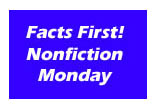Journal entry #3: Update on the legacy theme
Posted by Tammy Flanders at 6:00 AM 0 comments
Labels: journal entry, legacy, Nellie McClung Elementary School

Posted by Tammy Flanders at 7:00 PM 0 comments
Labels: art, biographies, community, online resources, picture books, social issues

Posted by Tammy Flanders at 6:00 PM 2 comments
Labels: biographies, cross-curricular, pleasure reading, research, science, social studies
Posted by Tammy Flanders at 3:11 PM 0 comments
Labels: journal entry, legacy, Nellie McClung Elementary School
A MT student recently reminded me about One hen: how one small loan made a big difference (823 M6380 PIC BK) and then, as these things often happen, I found out (see PaperTigers ) that the book had led to the creation of a non-profit organization One Hen, Inc. which recently celebrated its first anniversary, May 7th, 2010. (I know I missed the boat but I was so thrilled to discover this, I just had to share.)

Posted by Tammy Flanders at 6:00 PM 4 comments
Labels: community, cross-curricular, math, online resources, picture books, social issues, social studies
So it continues. I didn’t realize I’d have so many books to list for this posting that I decided to break it into two parts. Part 1 listed fiction, picture books and novels.
Read, read, read. That’s all I do. So much good stuff, so little time...
Posted by Tammy Flanders at 7:00 AM 0 comments
Labels: graphic novels, novels, picture books, pleasure reading

Posted by Tammy Flanders at 6:00 AM 0 comments
Labels: animals, art, biographies, picture books, pleasure reading, science, social studies
Posted by Tammy Flanders at 6:00 AM 0 comments
Labels: journal entry, legacy, Nellie McClung Elementary School
